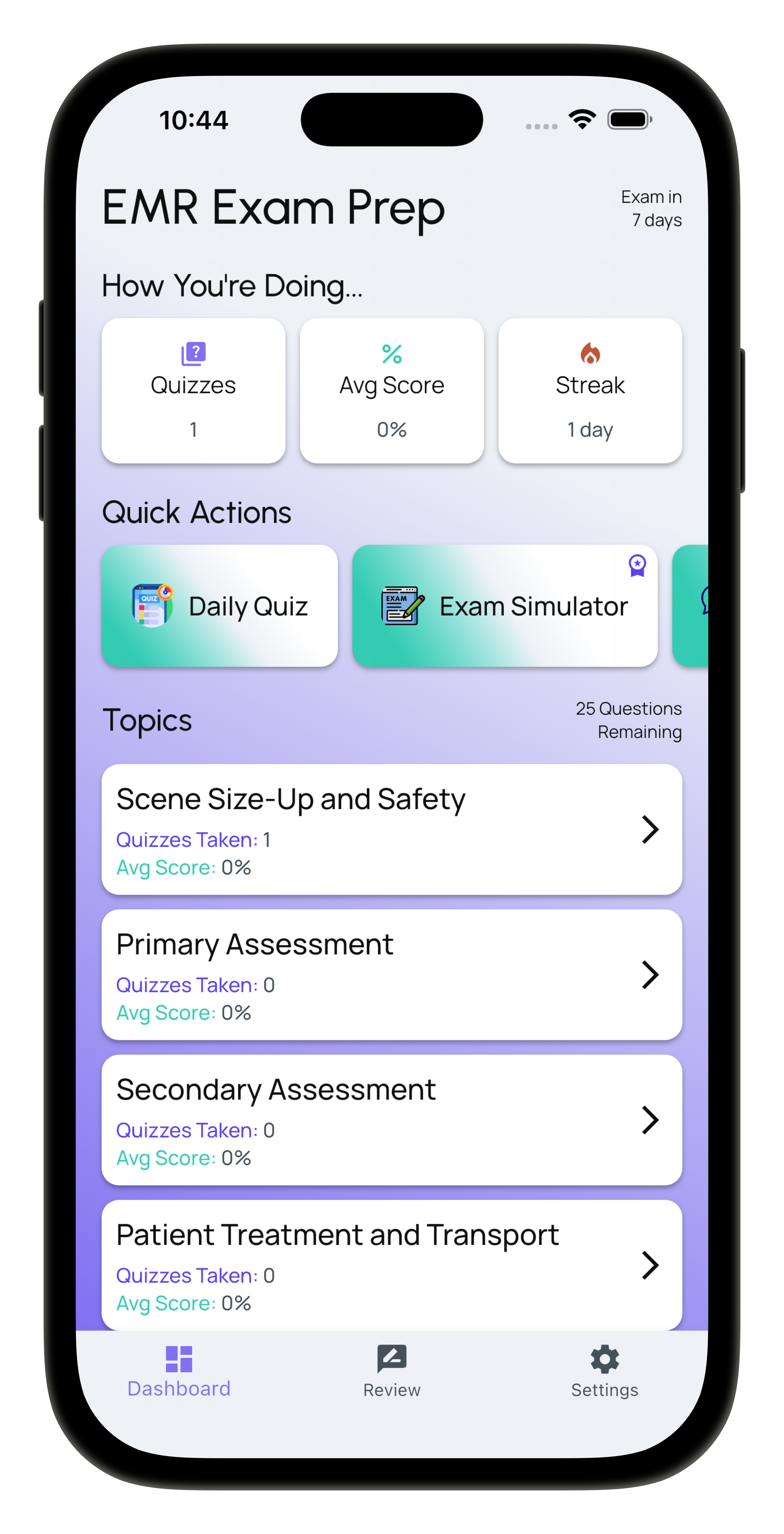EMR Exam Prep
As an aspiring Emergency Medical Responder (EMR), understanding the importance of emergency scene safety and assessment protocols is crucial for your training and future career. This foundational knowledge not only ensures your safety but also maximizes the effectiveness of your response. In this blog post, we’ll explore essential emergency medical concepts, practical training tips, real-world applications, and safety best practices. Let’s get started on your journey to becoming a competent and confident EMR!
Understanding Basic Emergency Medical Concepts
Before you can effectively assess an emergency scene, you must be familiar with some basic emergency medical concepts:
1. Scene Safety First
Always prioritize your safety and the safety of those around you. Before rushing to assist, evaluate the scene for potential hazards such as traffic, fire, hazardous materials, or unstable structures. Your assessment should always begin with a careful look around.
2. Mechanism of Injury (MOI)
Understanding the mechanism of injury helps you anticipate potential injuries a patient may have sustained based on the circumstances. For instance, a fall from a height may suggest spinal injuries, while a car accident may indicate head trauma or internal bleeding.
3. Patient Assessment
Once the scene is deemed safe, you can move on to assessing the patient. This involves:
- Primary Survey: Check the ABCs (Airway, Breathing, Circulation) to identify immediate life threats.
- Secondary Survey: Conduct a thorough physical examination and gather a medical history.
4. Communication
Clear communication is vital. Whether it’s with your team or the patient, effective communication helps ensure that everyone is on the same page, which can be lifesaving in critical situations.
Practical Training and Study Tips
1. Familiarize Yourself with Protocols
Study the protocols laid out in your EMR training materials. Understanding these guidelines will equip you to handle various emergency situations effectively.
2. Engage in Hands-On Practice
Simulated training exercises are invaluable. Participate in drills that allow you to practice scene assessment, patient evaluation, and basic life support skills. The more you practice, the more confident you will become.
3. Utilize EMR Exam Prep Resources
Take advantage of study guides and practice questions available on the EMR Exam Prep app. Regularly testing your knowledge will help reinforce what you’ve learned and identify areas where you may need further study.
4. Study Groups and Peer Learning
Form or join a study group with fellow EMR students. Discussing scenarios and sharing insights can deepen your understanding of emergency protocols and enhance your learning experience.
Real-World Application Examples
Example 1: Car Accident Scene
Imagine arriving at the scene of a car accident. First, you assess the environment for dangers like oncoming traffic or spilled fuel. Once cleared, you approach the vehicles, checking for victims. You perform a primary survey, noting that one patient is unconscious and not breathing. You initiate CPR and call for advanced medical support, demonstrating the importance of assessment and timely intervention.
Example 2: Outdoor Sports Injury
During a local sports event, a player collapses on the field. You quickly evaluate the scene for safety, ensuring that the area is clear of spectators and potential hazards like equipment. After confirming the player is responsive but in distress, you assess their breathing and circulation, following up with first aid for injuries like cuts or sprains while waiting for paramedics to arrive.
These real-world scenarios underline the importance of scene safety and thorough assessment.
Career Guidance for New EMRs
1. Pursue Continuing Education
The field of emergency medicine is always evolving. Stay updated with the latest practices by pursuing additional certifications, attending workshops, or joining professional organizations.
2. Network with Professionals
Connect with experienced EMRs and other EMS professionals. They can provide insight into the industry, mentorship, and potential job opportunities.
3. Volunteer Opportunities
Consider volunteering with local EMS agencies or community health organizations. This not only enhances your skills but also builds your resume and professional connections.
Safety Considerations and Best Practices
1. Always Wear Personal Protective Equipment (PPE)
Whether it’s gloves, masks, or goggles, PPE is critical in protecting you from potential pathogens and contaminants on the scene.
2. Follow Protocols Rigorously
Adherence to established protocols ensures that you provide the safest and most effective care. Always follow the guidelines you learned during your training.
3. Stay Calm and Focused
In emergency situations, anxiety can hinder your response. Practice mindfulness techniques and breathing exercises to help maintain your composure when faced with high-stress situations.
4. Recognize Your Limits
Know when to call for help. If a situation exceeds your training or resources, don’t hesitate to involve other responders or emergency services.
Conclusion
As you embark on your journey as an Emergency Medical Responder, remember that a solid understanding of emergency scene safety and assessment protocols is essential. By prioritizing safety, engaging in continuous learning, and practicing your skills, you’ll be well-equipped to respond effectively in emergencies.
Don’t forget to leverage the resources available through EMR Exam Prep to support your training. With dedication and the right preparation, you can make a significant impact in your community as an EMR. Stay safe, stay prepared, and embrace the rewarding challenges ahead!
Starting your EMR certification journey? Try EMR Exam Prep for practice questions and study materials designed to help you succeed as an Emergency Medical Responder.
